A refuge under threat | FEBRUARY 15
Bertha Pappenheim (1859–1936), born and raised in Vienna, was a leading German-Jewish feminist. Better known as the patient Anna O. in Sigmund Freud’s “Studies on Hysteria,” she later moved to Frankfurt a.M., where she gradually shifted the emphasis of her activism from charitable work to women’s empowerment. In 1907, she established a home in Neu-Isenburg for young Jewish women in need of protection, a feat she considered her most important achievement. Under the Nazis, the home had to register all inhabitants with the police. In the letter displayed here, the secretary of the home asks Rabbi Dr. Merzbach at the District Rabbinate in Darmstadt to immediately send the papers of a resident of the home, Esther Kleinmann, who would otherwise face deportation.
Kibbutz Giv’at Brenner | FEBRUARY 14
Kibbutz Giv’at Brenner was established in 1928 by young immigrants from Poland and Lithuania who were soon joined by a group from Germany. As in many other kibbutzim, conditions at Giv’at Brenner were initially harsh, causing some members to leave. In the 1930s, due to the absorption of new immigrants, the kibbutz grew. Over time, a thriving agriculture and various industrial enterprises, including a cannery and a factory for irrigation equipment developed. The picture presented here shows the carpentry shop of the kibbutz in 1938. A unique feature was Beit Yesha, a vegetarian convalescent home established in the mid thirties—the first of its kind in a kibbutz.
Between deceit, lies and propaganda | FEBRUARY 13
In early 1938, a variety of assumptions regarding the future of the Jews circulated. The official SS organ Das Schwarze Korps (The Black Corps), for example, surmises that after the exclusion of Jews from “the spiritual and political life of the nation,” the physical separation from the majority of Jews within about twenty years will be no chimera. According to this notice disseminated by the Jewish Telegraphic Agency (JTA), Das Schwarze Korps, claims that the Jews are not willing to leave Germany and that the “small number” of Jewish emigrants should not be ascribed to “foreign exchange and other problems” but rather to the unwillingness of Jews in other countries to “lift a finger to give the emigrants or would-be emigrants a home.” In fact, by 1937, as many as 130,000 (out of a total of 600,000) Jews had left the country.
Mouth of the Hydra | FEBRUARY 12
One month before Anschluss, the Austrian-Jewish weekly Die Wahrheit, exhorts Austrian Jews to learn from the development of antisemitism in Poland. The Vienna-based paper, which, since the twenties had increasingly advocated integration and distanced itself from Zionism, perceived Zionism as a dangerous breach with Polish-Jewish history: in the past, says the author of this article, Jews in Poland stood out with their patriotism and commitment to matters of national concern. He opines that their turning towards Palestine creates the impression of a lack of loyalty, thus giving ammunition to Jew-haters. Moreover, the article accuses Zionists of exerting undue pressure upon dissenters.
Sell the jewelry | FEBRUARY 11
In February 1938, two brothers living in two different continents, Joszi Josefsberg in Europe (Chelles, France) and Arthur Josefsberg (New York) discuss in their correspondence how best to proceed to obtain affidavits to rescue their parents, who are still in Germany. But not only the fact that their parents’ emigration has not yet been secured worries Joszi—he is also concerned about their material survival. Such concerns were common among Jews who had left behind parents, siblings, and often spouses. Nazi efforts to force Jews out of numerous professions had made it harder and harder for those remaining in Germany to earn a living.
Several months after the 1938Projekt was completed, LBI learned that the letter was misdated while transcribed. Although it was written later than February 1938, LBI decided to keep it in the project under the same date because of the important content.
Hoping for a breakthrough | FEBRUARY 10
Already in 1936, the League of Nations had appointed Sir Neill Malcolm as “High Commissioner for German Refugees.” In light of the increasing stream of refugees from Nazi Germany, an inter-governmental conference was convened in February 1938 in Geneva under the aegis of the League of Nations. The orthodox paper Der Israelit reports on the first day of the gathering, which was attended by delegates from 14 states. Through the Nuremberg Laws, Jews had been downgraded from “citizens of the Reich” to mere “subjects.” As soon as they left Germany, they could be stripped off their citizenship entirely. Two members of the liaison committee, N. Bentwich from London and M. Seroussi from Paris, therefore demanded the extension of refugee status to stateless migrants as well.
Palestine | FEBRUARY 1
This painting by the artist Hermann Struck, a resident of Haifa and one of the relatively small number of German Jews who emigrated to Palestine already before 1933, shows one of the iconic landscapes of the Holy Land, the Dead Sea. It does not, however, reflect the difficult social situation in Palestine in the late 1930s. Due to the growing influx of Jewish immigrants in general and, after 1933, German Jews in particular, tensions between Jews and Arabs as well as between Arabs and the British mandatory administration were increasing. In 1936, an Arab uprising began which was still in full swing in February 1938.
Vacation from the threat | JANUARY 31
Although one could imagine 1938 as a very gloomy and tense year for German Jews, some events, such as vacations, bore a semblance of normalcy. In this postcard from a trip to the “sunny South,” no political thunderclouds appear on the horizon. The writer tells the recipient in Frankfurt, Rosel Lehrberger, about an afternoon dance at the Palais de la Jetée in Nice, an elegant Moorish Revival casino from the Belle Epoque, which for decades was a tourist magnet.
Counting refugees | JANUARY 21
After the Nazis’ rise to power, the economic historian and journalist Kurt Zielenziger fled to Amsterdam with his wife and son. There he co-founded the “Jewish Central Information Office,” the goal of which was to document the persecution of Jews by the Nazis and to spread the information. In this release, the Jewish Telegraphic Agency quotes his computation of Jewish emigrants from Germany according to destination countries. According to Zielenziger, by the end of 1937, a total of 135,000 Jews had left the country.
Markus becomes Mischa | JANUARY 19
Markus Wolf (center in the photo above), one of the sons of the communist physician and writer Friedrich Wolf (right), was born in 1923 in Hechingen in the Swabian Alps. After the Nazi seizure of power the family initially emigrated to Switzerland, then to France, and in 1934 to the Soviet Union. The Wolf family resided at the Hotel Lux in Moscow where a large number of communist refugees from Germany had been given shelter. During the years of the Great Terror (1936–38), deeply suspicious of the foreigners, in whom it saw potential spies for the Reich, Stalin’s regime tortured and interrogated many of the German emigrants. Among the approximately 600,000 victims of the purge were 178 German communists, most of them residents of the Hotel Lux. The Wolf family survived.
Nowhere safe to go | JANUARY 18
When German Jews considered the various emigration options in January 1938, Palestine might have seemed a dangerous destination. As the Jüdische Rundschau reported, in the same month, attacks against Jewish inhabitants and clashes between Jews and Arabs occurred in numerous places in Palestine. Apart from local resistance, the paper mentioned Syrian terrorists, the smuggling of weapons from Libya, and the refusal of the Egyptian government to conduct direct Arab-Jewish negotiations. In light of these facts, emigrating to Palestine could appear to the prospective emigrants like jumping from the frying pan into the fire rather than finding a safe refuge.
Mixed marriage by special permit | JANUARY 17
An unidentified author congratulates the German mountain climber and physicist Hermann Hoerlin, based in Stuttgart, on his upcoming wedding with Käthe Schmid, who was considered a “Half-Jew” in Nazi parlance. The “Law for the Protection of German Blood and German Honor,” adopted in 1935, forbade marriages between Jews and non-Jews. Despite the law, the couple Hoerlin-Schmid obtained a special permit and the wedding could go ahead.
Suited up | JANUARY 15
Julius Ostberg was the owner of a uniform and coat factory in Essen. In January 1938, he visited his daughter Ilse in Palestine. Similar to other German Jews in Palestine, Ostberg did not think about giving up his outfit – associated among German Jews with correctness and good taste and often ridiculed by Jews of other nationalities. In this picture, taken on the beach, despite the casual environment, Mr. Ostberg presents himself in formal attire consisting of a suit and a tie.
Staged normalcy | JANUARY 14
The January issue of the Berlin Kulturbund magazine conveys a sense of normalcy—local businesses advertise merchandise and services like cosmetics, women’s apparel and car repairs, while the Kulturbund schedule offers Eugene Scribe’s “The Ladies’ Battle.” The comedy must have provided a welcome respite from the worrisome situation.
Advice from New York | JANUARY 13
A representative of the New York office of Intria International Trade & Investment Agency Ltd., London, advises a client in New York to use the “Haavaramark” for “transfers to persons of Jewish descent residing in Germany.” The Haavara (transfer) Agreement had been made between Zionist representatives and the Nazis in 1933. It enabled emigrants to deposit money in a German account, which was used to pay for the import of German goods to Palestine. The proceeds from the sales of these goods in Palestine, after the deduction of costs, was disbursed to the new immigrants.
An arbitrary ordeal | JANUARY 12
Herbert Freeman was born Herbert Friedmann on December 13, 1925 in Frankfurt/Main, Germany. His father, Leo Friedmann, immigrated to the United States first. Herbert, his mother, and his brother applied for a US visa in Stuttgart. During the obligatory health check-up, the perfectly healthy Herbert was diagnosed as a “tuberculosis carrier” and was unable to join his mother and brother on their journey to the United States in 1936. After repeated unsuccessful attempts, in order to circumvent the Stuttgart US Consulate, 12-year-old Herbert was sent to Zurich (permission to file an application outside Germany was obtained in no small part thanks to the intervention of Albert Einstein). The letter was written during Herbert’s stay in Switzerland. He mentions his upcoming visit to the US Consulate and reapplying for the visa, and describes his days while separated from his relatives.
“Who won’t betray us in the end?” | JANUARY 11
As German Jews were getting arrested or being forced to leave the country, the performances put on by the local branches of the Jewish Kulturbund (Culture Association) were among the few places of refuge where Jews could enjoy culture as in earlier days. Among other things, in the winter season of 1937/1938 the Jüdischer Kulturbund Berlin performed Tchaikovsky’s Eugene Onegin (Director: Dr. Kurt Singer) and Scribe’s The Ladies’ Battle (Director: Fritz Wisten). Since 1935, the Kulturbund’s venue had been the theater at 57 Kommandantenstrasse, the former Herrnfeld Theater, where popular Jewish plays had once been staged.
One-way ticket | JANUARY 10
If advertisements in newspapers reflect the main needs of society, then the Berlin Jüdisches Gemeindeblatt (Jewish Community Paper) from January 1938 can serve as a perfect example of such needs in times of crisis. By January 1938, when the majority of German Jews were preparing for emigration or actively looking for ways to leave the country, advertisements for travel agencies and shipping companies dominated the commercial space of the newspaper. The main destinations of German-Jewish emigrants were Palestine as well as North- and South America.
Mutual aid for the dispossessed | JANUARY 1
After the passing of the Nuremberg Laws in 1935, Jews were excluded from the support of the “Winter Relief Agency of the German People” and had to organize their own relief agency. Nazi legislation was making it more and more difficult for Jews in Germany to earn a living. The Jewish Winter Relief Organization stepped into the breach and assisted impoverished members of the community with food, medicine, and heating fuel. The photo was taken at a concert for the benefit of the Jewish Winter Relief.



































